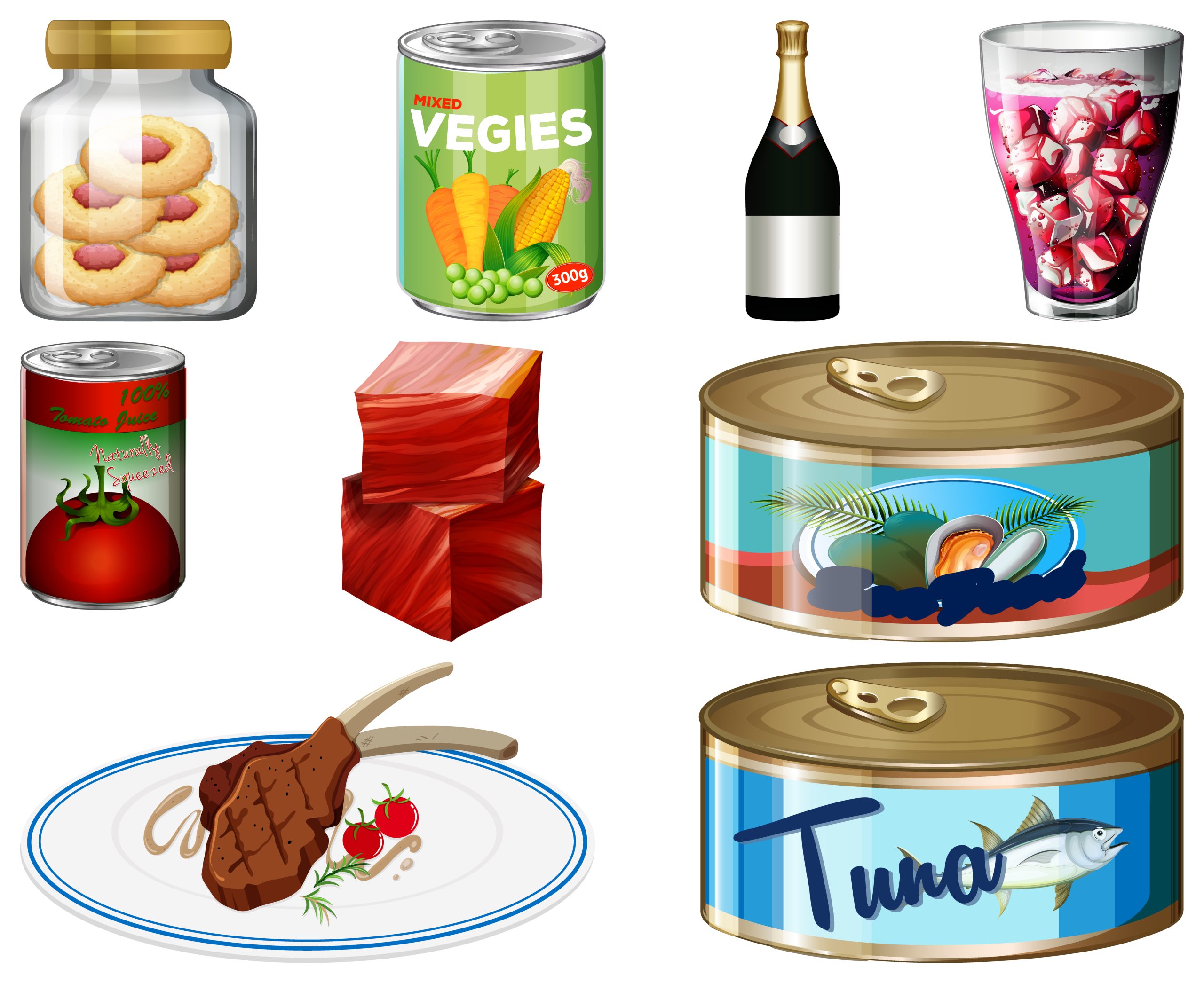Well, fear not, because we are here to shed some light on this fishy dilemma. In this article, we will dive into the depths of the pros and cons of both options, uncovering the nutritional differences, health benefits, and various uses. But that’s not all – we will also explore factors to consider, such as personal taste and cooking choices, that can help you navigate these murky waters and make an informed decision. So, get ready to embark on a journey that will satisfy your curiosity and leave you with a clear understanding of which canned fish option is truly the catch of the day.
Nutritional Comparison
When comparing the nutritional content of canned tuna, it is important to consider the differences between tuna packed in oil and tuna packed in water. One key factor to consider is the omega-3 content comparison. Draining tuna packed in water retains most of the omega-3 fatty acids, while draining tuna packed in oil removes some of these healthy fats. A study in Public Health Nutrition found that tuna packed in water has been found to have more omega-3 fats than tuna packed in oil.
Another important consideration is the impact on calorie intake. One 6.5-ounce can of drained tuna packed in oil has 317 calories, while tuna packed in water yields 150 calories per can. If you are counting calories, choosing tuna packed in water may be preferable.
Additionally, the vitamin D and selenium levels in tuna differ depending on whether it is packed in oil or water. Oil-packed tuna generally contains higher levels of these nutrients compared to water-packed tuna.
When it comes to mercury levels, there is no significant difference between tuna packed in oil and tuna packed in water. However, it is important to note that white (or albacore) tuna generally contains more total mercury than light (or skipjack) tuna.
To minimize health risks, it is recommended to consume tuna in moderation. The maximum recommended intake is one to three 4-ounce servings per week, depending on the type of tuna consumed. It is important to consider the potential mercury levels and high sodium content in tuna. Adhering to recommended serving sizes helps minimize these risks. Overall, the choice between tuna in oil and tuna in water should be based on individual preferences and nutritional needs.
Health Benefits and Uses of Oil-Packed Tuna
Considering the nutritional content and potential health risks discussed in the previous subtopic, it is important to understand the specific health benefits and various uses of oil-packed tuna.
- Health Benefits:
- Oil-packed tuna has more flavor and a tender texture due to the fat content.
- It contains higher levels of bone-healthy vitamin D and selenium, which supports the immune system.
- The oil used in canned tuna is typically unsaturated, making it heart-friendly.
- It is a great source of lean protein and heart-healthy omega-3 fatty acids.
- Uses:
- Oil-packed tuna can be enjoyed on its own without the need for additional condiments.
- It is ideal for topping salads, pasta dishes, crackers, and breads.
- Some European brands offer larger fillets packed in olive oil, smoked, or with added herbs and spices.
- It can be used in various recipes, offering endless possibilities for different dishes.
When comparing oil-packed tuna to water-packed tuna, the choice ultimately depends on personal taste preferences and specific dietary needs. Oil-packed tuna provides more flavor and moisture, while water-packed tuna is suitable for traditional dishes like tuna salad and tuna melts. Both types offer nutritional value, with oil-packed tuna containing higher levels of vitamin D and selenium. It is important to consider individual priorities and intended use when making the decision between the two.
Health Benefits and Uses of Water-Packed Tuna
Water-packed tuna offers a range of health benefits and versatile uses in various dishes. When it comes to nutritional value, water-packed tuna is a great source of lean protein and heart-healthy omega-3 fatty acids. It contains fewer calories compared to oil-packed tuna, making it a suitable choice for those watching their calorie intake. Water-packed tuna is also lower in fat, which can be beneficial for individuals looking to reduce their fat consumption.
In terms of uses, water-packed tuna is commonly used in traditional dishes such as tuna salad, tuna melts, and tuna casserole. Its firm and light texture allows it to be easily flaked or mashed, making it ideal for mixing with other ingredients to add moisture, flavor, and texture. Additionally, water-packed tuna can be used in any recipe that calls for canned tuna, even when oil-packed tuna might be tastier. Recipes like tuna tostadas can utilize water-packed tuna combined with non-fatty flavorings such as citrus juice, onions, and herbs.
Factors to Consider When Choosing Between Oil and Water
To make an informed decision between oil-packed and water-packed tuna, it is important to consider several factors that can impact your choice:
- Nutritional Differences:
- Tuna packed in oil contains more calories compared to water-packed tuna.
- Water-packed tuna is a great source of lean protein and heart-healthy omega-3 fatty acids.
- Oil-packed tuna is higher in bone-healthy vitamin D and selenium, which supports the immune system.
- Calorie Comparison:
- One 6.5-ounce can of drained tuna packed in oil has 317 calories, while tuna packed in water yields 150 calories per can.
These factors highlight the nutritional differences and calorie comparison between oil-packed and water-packed tuna. While tuna packed in oil provides more calories and higher levels of vitamin D and selenium, water-packed tuna is a great source of lean protein and heart-healthy omega-3 fatty acids. Ultimately, the choice between oil and water depends on personal preference and specific nutritional goals. If you are counting calories and aiming to maximize omega-3 fatty acid intake, water-packed tuna is recommended. On the other hand, if you are seeking enhanced flavor, moisture, and higher vitamin D levels, oil-packed tuna is preferred. Consider these factors and choose the option that aligns with your preferences and dietary needs.
Personal Taste and Cooking Choices
When it comes to choosing between oil-packed and water-packed tuna, your personal taste and cooking choices play a crucial role in determining which option is best for you. The texture of tuna can vary depending on the packing liquid. Oil-packed tuna tends to have a tender texture due to the fat content, while water-packed tuna is firmer and easier to flake or mash. Your flavor preferences also come into play. Oil-packed tuna has a stronger tuna flavor, which can enhance certain dishes, while water-packed tuna provides a more subtle tuna flavor.
Recipe variations should also be considered. Oil-packed tuna is recommended when enjoying tuna with minimal mix-ins, as it already has enough moisture and flavor. On the other hand, water-packed tuna is preferred when flavoring the tuna with other ingredients, such as mayonnaise or other creamy ingredients.
Ultimately, the choice between oil-packed and water-packed tuna depends on your personal taste preferences and the specific recipes you plan to use it in. Experimenting with different types and brands can help you determine your preferred uses for each.
Cost Considerations
Consider the cost implications when choosing between oil-packed and water-packed tuna. When making your decision, take into account the cost versus nutrition, flavor differences, sustainability factors, convenience and portability, as well as health risks and benefits.
- Cost vs Nutrition:
- Water-packed tuna is generally more affordable compared to oil-packed tuna.
- Both options provide essential nutrients like protein, omega-3 fatty acids, selenium, and vitamin D, but oil-packed tuna may have slightly higher levels of vitamin D and selenium.
- Flavor Differences:
- Oil-packed tuna offers a richer and moister texture with a stronger tuna flavor.
- Water-packed tuna provides a more subtle tuna flavor and a firmer texture.
- Sustainability Factors:
- Look for labels that indicate responsibly fished options, such as pole and line caught tuna, to support sustainable fishing practices.
- Consider the environmental impact of the packaging materials used for each option.
- Convenience and Portability:
- Both oil-packed and water-packed tuna are convenient and portable, making them suitable for on-the-go meals and snacks.
- Pre-drained packages of water-packed tuna are available for easy preparation.
- Health Risks and Benefits:
- Tuna, regardless of packing method, should be consumed in moderation due to its potential high sodium content and mercury levels.
- Consider your individual dietary needs and health conditions when determining the amount of tuna to include in your diet.
Canned Tuna Basics
Canned tuna is a versatile and nutrient-packed ingredient that can be a valuable addition to a well-balanced diet. It is a rich source of protein, containing 13 grams per 1/2 cup serving, along with essential minerals and nutrients like omega-3 fatty acids, selenium, and vitamin D. Different species of tuna offer varying tastes, textures, and health benefits. When choosing between water-packed and oil-packed tuna, there are a few factors to consider. Water-packed tuna contains more protein and fewer calories compared to oil-packed tuna. It has a firm texture that is easy to flake or mash, making it ideal for recipes like tuna salad. On the other hand, oil-packed tuna is moister and has a softer texture. It contains healthy fats, especially if packed in extra-virgin olive oil or avocado oil. The oil can be used for extra-savory salad dressings or to make mayonnaise or aioli. Ultimately, the choice between water-packed and oil-packed tuna depends on personal preference and intended use in different canned tuna recipes.


